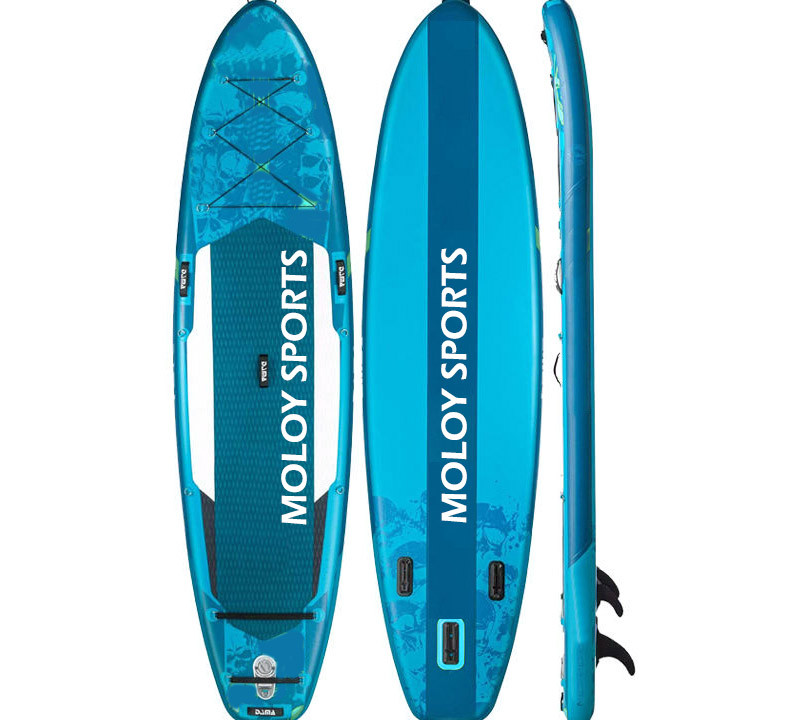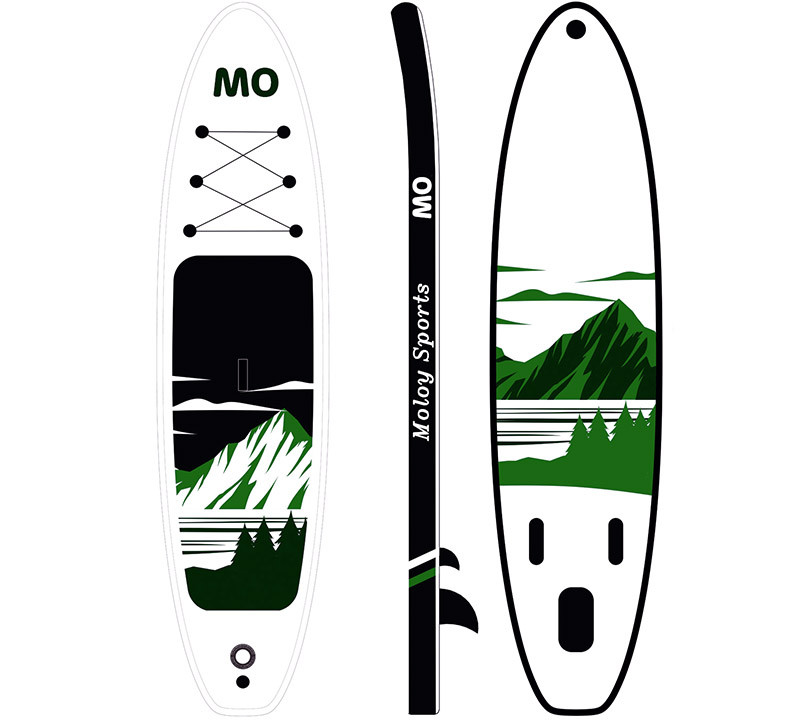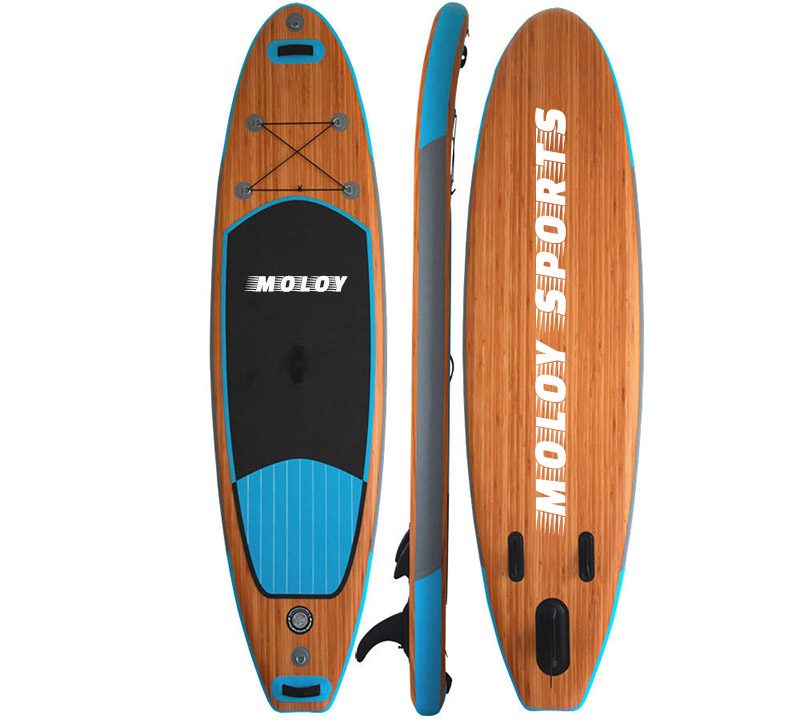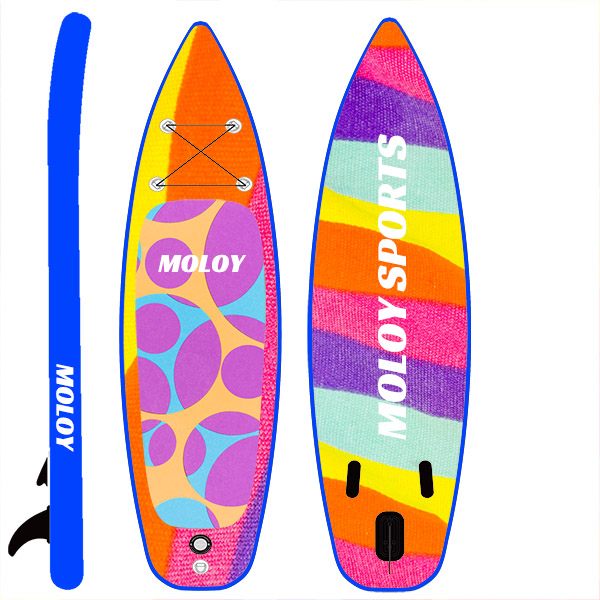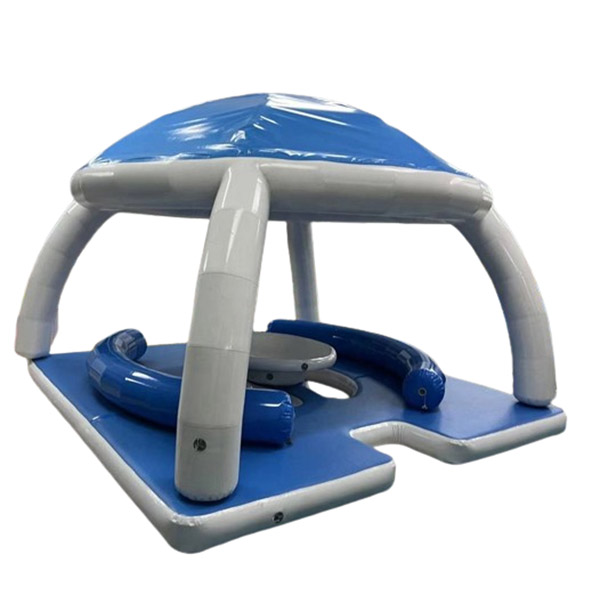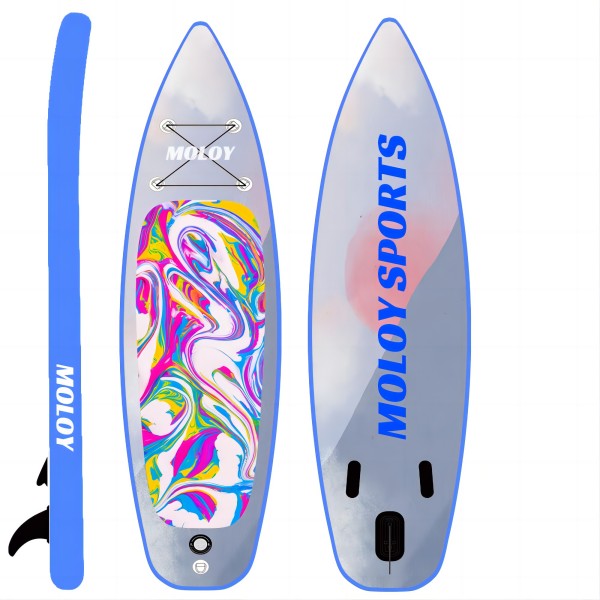
Come scegliere la tavola da paddle gonfiabile giusta per la tua attività
Lo stand-up paddleboarding (SUP) è uno sport acquatico popolare che offre un modo divertente e a basso impatto per esplorare l'aria aperta. Puoi giocare con gli SUP su un lago calmo, cavalcare qualche onda sull'oceano o sfidare te stesso con delle rapide in acque bianche. È un buon modo per divertirsi con amici e familiari. Ma come si fa a scegliere quella giusta per la tua attività? Ecco alcuni suggerimenti per aiutarti a trovare la tavola migliore per le tue esigenze.
Innanzitutto, devi considerare che tipo di attività vuoi fare sul tuo SUP. Esistono diversi tipi di tavole progettate per scopi diversi, come pagaiata ricreativa, surf, touring, gare, pesca, yoga e altro ancora. Ogni tipo di tavola ha le sue caratteristiche e vantaggi.
1. Tavola da paddle ricreativa
2. Tavola da surf:
3. Tavola da sup da turismo:
4. Tavola da paddle da gara:
5. Tavola SUP da pesca:
6. Tavola da yoga sup:

1. Tavola da paddle ricreativa:
Se sei alle prime armi con il SUP o vuoi semplicemente pagaiare in modo informale su acque calme, vorrai una tavola ricreativa che sia stabile, facile da manovrare e durevole. Le tavole SUP ricreative sono solitamente larghe e lunghe, con punta e coda arrotondate. Possono essere realizzate in materiali drop stitch e PVC. Le tavole SUP gonfiabili sono più comode da trasportare e riporre.
2. Tavola da surf:
Se vuoi cavalcare qualche onda con il tuo SUP, ti servirà una tavola da surf agile, reattiva e veloce. Le tavole da surf sono solitamente più corte e strette delle tavole ricreative, con punta e coda appuntite. Hanno anche più rocker (curva) su punta e coda per aiutarle a girare rapidamente sulle onde.
3. Tavola da sup da turismo:
Se vuoi fare viaggi più lunghi o esplorare nuove acque sul tuo SUP, avrai bisogno di una tavola da turismo che sia veloce, stabile ed efficiente. Le tavole da turismo sono solitamente più lunghe e strette delle tavole ricreative, con una punta appuntita e un fondo piatto. Hanno anche più volume (spessore) e spostamento (forma dello scafo) per aiutarle a scivolare dolcemente e trasportare più attrezzatura. Le tavole da paddle gonfiabili sono più leggere e facili da imballare.
4. Tavola da paddle da gara:
Se vuoi competere o sfidare te stesso sul tuo SUP, avrai bisogno di una tavola da gara che sia molto veloce, snella e leggera. Le tavole da gara sono solitamente le più lunghe e strette di tutte le tavole, con una punta e una coda affilate. Hanno anche un rocker molto ridotto e un volume e uno spostamento molto elevati per aiutarle a tagliare l'acqua con una resistenza minima.
5. Tavola SUP da pesca:
Se vuoi pescare dal tuo SUP, avrai bisogno di una tavola da pesca stabile, spaziosa e versatile. Le tavole da pesca sono solitamente più larghe e lunghe delle tavole ricreative, con una coda rotonda o quadrata. Hanno anche più punti di attacco per accessori come portacanne, refrigeratori, ancore, ecc. Le tavole da pesca gonfiabili sono più galleggianti e comode per stare in piedi per lunghi periodi di tempo.
6. Tavola da yoga sup:
Se vuoi praticare yoga sul tuo SUP, avrai bisogno di una tavola da yoga stabile, comoda e spaziosa. Le tavole da yoga sono solitamente più larghe e corte delle tavole ricreative, con punta e coda arrotondate. Hanno anche un morbido deck pad che copre la maggior parte della superficie della tavola per ammortizzazione e aderenza. Le tavole da yoga gonfiabili sono più flessibili e più facili da mantenere in equilibrio.
In secondo luogo, è possibile scegliere anche in base a diverse forme, dimensioni, pesi e costruzione della tavola.
Forma e dimensione della tavola:
Le SUP sono disponibili in diverse lunghezze, larghezze e spessori, che ne influenzano la stabilità, la manovrabilità e la velocità. In generale, le tavole più lunghe sono più veloci e più adatte per il turismo o le gare, mentre quelle più corte sono più agili e facili da girare, il che le rende ideali per il surf o il river paddling. Le tavole più larghe sono più stabili e possono trasportare più peso, ma sono anche più lente e più difficili da pagaiare. Le tavole più spesse hanno più volume e possono galleggiare più in alto sull'acqua, ma sono anche più influenzate dal vento e meno reattive.
Tipo di scafo della tavola:
Lo scafo è la forma della parte anteriore o del naso della tavola e determina le prestazioni della tavola in diverse condizioni dell'acqua. Esistono due tipi principali di scafi: plananti e dislocanti. Gli scafi plananti sono piatti e larghi e sono progettati per navigare sulla superficie dell'acqua. Sono versatili e possono gestire bene l'acqua agitata e le onde. Sono anche più facili da bilanciare e manovrare, il che li rende adatti ai principianti e ai pagaiatori ricreativi. Gli scafi dislocanti sono appuntiti e stretti e sono progettati per tagliare l'acqua. Sono più veloci ed efficienti degli scafi plananti, ma richiedono anche più abilità e sforzo per pagaiare. Sono ideali per pagaiare a lunga distanza o per le gare.
Preferenza personale e budget:
In definitiva, il SUP migliore per te è quello che si adatta alle tue esigenze, ai tuoi obiettivi e al tuo stile. Dovresti anche considerare il costo degli accessori, come pagaie, leash, pinne, sacche, pompe, ecc. Puoi anche noleggiare o prendere in prestito una tavola prima di acquistarne una per provarla e vedere se ti piace.
Scegliere il SUP giusto per la tua attività può fare una grande differenza nel tuo divertimento e nelle tue prestazioni in acqua. Considerando questi fattori, puoi restringere le tue opzioni e trovare la tavola perfetta per te.
Moloy Sports è un produttore professionale di tavole SUP gonfiabili. Forniamo design personalizzati per soddisfare le esigenze dei clienti. Se stai cercando un produttore di tavole SUP personalizzate all'ingrosso, Moloy è un partner affidabile per te.







